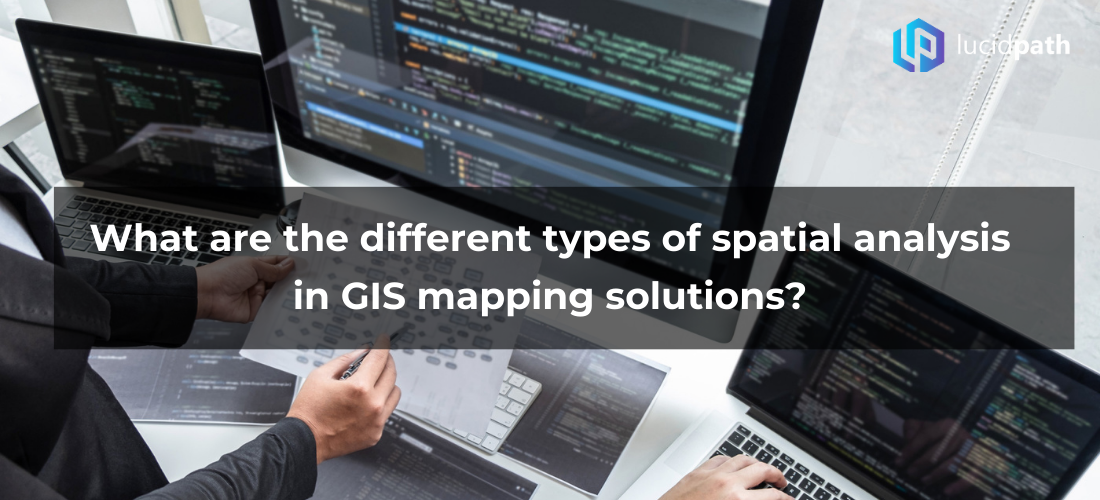What are the different types of spatial analysis in GIS mapping solutions?
GIS is a vast subject where spatial data is used to extract relevant conclusions so that businesses may make swift decisions. Utilizing GIS mapping solutions is one of the most efficient ways to utilise spatial data. Analysis of spatial data involves tabular data and geographical aspects. In GIS technology, location data and attribute data are combined to offer insightful results. Attribute data specify spatial data for problem-solving purposes.
Spatial analysis
Spatial analysis is a method for analysing data collected by GIS mapping technologies. It is achievable when we examine attribute and spatial data exhaustively. Through spatial analysis, effective problem-solving is feasible. In GIS mapping solutions, specialists undertake spatial analysis using a variety of statistical techniques and approaches. Similarly, the strategies you choose may be simple or complicated.
By analysing spatial data, you can:
- Derive significant conclusions
- Organize information by importance
- Transpose information
Spatial analysis types
GIS mapping systems offer a versatile interface for interacting with and visualizing geospatial data. It converts unprocessed geographical data into usable information.
- Questions and Reasoning
One of the most fundamental and elementary forms of spatial analysis is queries and reasoning. This form does not generate any new data and is used to discover simple inferences.
- Transformations
As their name suggests, transformations transform data sets by comparing them. It is one of the simplest spatial analysis techniques. By comparing two datasets, a new dataset with a defined insight will be produced. It could be either arithmetic or geometry.
- Measurements
Measuring is a type of spatial analysis in which data are utilised to draw conclusions. Geographic value is determined by assigning a numerical value to specific geographical facts. Here, it is simple to determine the length, width, shape, and area of spatial data. Identifiable is also the relationship between comparable objects.
- Descriptive Summaries
Descriptive statistics are broad summaries that capture the essence of a given set of data. Two numbers’ mean and standard deviation are presented. As its name implies, it is typically employed in statistics.
- Optimization
Using well-defined criteria, optimization spatial data technology determines the optimum places or items in a given set of data. Similar to other industries, firms use optimization extensively for market research.
- Testing of hypotheses
Testing hypotheses is a geographical analysis technique based on inferential statistics. Here, the probabilities are used to determine the pattern’s path. It uses a set of restricted data to create an assumption about the entirety of something.
Utilizing GIS mapping solutions is one of the most efficient ways to utilise spatial data. It in
About ourselves
Lucidpath is the leading provider of GIS mapping solutions in India, delivering both location-based applications and geospatial software. We are able to provide seamless and exceptional geospatial solutions to a variety of industries, from healthcare to finance. As the leading provider of GIS mapping solutions in India, we are committed to providing GIS-enabled solutions for digitizing business processes in the most dependable manner.









